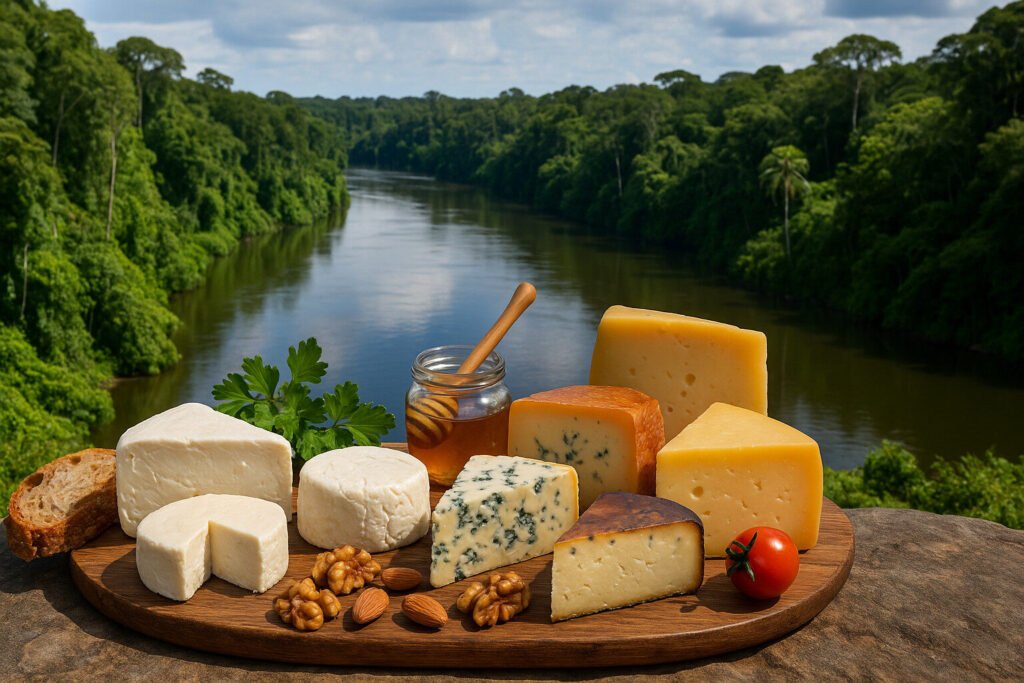Cheese Of Guyana
Definition and Scope
Guyana’s cheese production reflects its Caribbean and South American cultural fusion. The nation’s dairy output primarily centers on fresh, soft cheeses suited to its tropical climate. These cheeses often incorporate techniques from European, African, and Indigenous culinary traditions.
Guyanese cheese varieties are typically consumed fresh and lack extensive aging processes. The scope includes simple farmer’s cheeses and fresh curd cheeses, often made from cow’s milk. Production is largely artisanal or small-scale, serving local markets and household consumption.
Production Techniques
Traditional Guyanese cheese making relies on simple acid or heat coagulation of milk. Lemon juice or vinegar is commonly used to curdle fresh, unpasteurized milk from local dairy farms. The resulting curds are lightly salted and drained in cloth bags, producing a moist, spreadable cheese.
Some producers employ basic rennet coagulation for slightly firmer textures. The process typically concludes within hours rather than weeks, preventing spoilage in warm conditions. This rapid production cycle aligns with the need for immediate consumption in Guyana’s humid environment.
Sensory Profile
Guyanese fresh cheeses present a mild, milky flavor with subtle tangy notes from acid coagulation. Their texture ranges from creamy and spreadable to slightly crumbly, depending on moisture content. The color is consistently white to off-white, lacking the rind development of aged cheeses.
These cheeses possess high moisture content and minimal fat separation. They carry clean lactic aromas without complex fermentation characteristics. The flavor profile remains simple and adaptable, serving as a neutral base for various local dishes.
Culinary Applications
Fresh Guyanese cheese primarily functions as a cooking ingredient rather than a table cheese. It is commonly crumbled over pepperpot, the national stew, or melted into bake and saltfish preparations. The cheese’s mildness allows it to complement rather than dominate spicy Caribbean flavors.
Households frequently incorporate it into sandwiches, salads, and pastry fillings. Its high moisture content makes it unsuitable for grating but ideal for blending into doughs and batters. The cheese also appears in breakfast dishes alongside eggs and various starches.
Regional Context
Guyana’s cheese tradition exists within the broader Caribbean fresh cheese spectrum. It shares similarities with Jamaican cottage cheese and Trinidadian fromage, though with distinct local variations. These cheeses represent practical adaptations to limited refrigeration and tropical conditions.
The Dutch and British colonial influences appear in some production methods, while African traditions contribute to seasoning approaches. Unlike cheese cultures in temperate regions, Guyana’s output remains focused on immediate consumption products. This reflects both climate constraints and the nation’s culinary preferences for fresh dairy.


